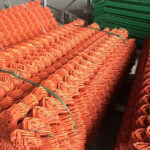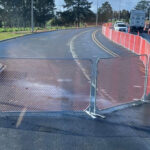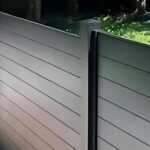The Ultimate Guide to Transporting Cattle Panels: Tips, Tricks, and Safety Measures
Are you a farmer or rancher looking to transport cattle panels efficiently and safely? Whether you’re moving them for a new fencing project or relocating your livestock, transporting cattle panels can be a challenging task. This comprehensive guide will walk you through everything you need to know about transporting cattle panels, from preparation to delivery. We’ll cover the best methods, essential safety measures, and insider tips to make your journey smooth and hassle-free.
Why This Article is Worth Your Time
Transporting cattle panels may seem straightforward, but there are many factors to consider to ensure safety, efficiency, and compliance with regulations. This guide combines expert knowledge, practical experience, and industry best practices to help you avoid common pitfalls and make informed decisions. Whether you’re a seasoned farmer or a newcomer to the world of livestock management, you’ll find valuable insights to streamline your cattle panel transportation process.
What Are Cattle Panels and Why Are They Important?
Before we dive into the transportation methods, let’s briefly discuss what cattle panels are and their significance in farm management.Cattle panels, also known as livestock panels or farm panels, are versatile fencing solutions used in agriculture. They are typically made of galvanized steel and come in various sizes, with 16-foot lengths being common. These panels are essential for:
- Creating temporary or permanent enclosures for livestock
- Dividing pastures
- Building quick shelters or windbreaks
- Constructing garden trellises or raised beds
Galvanised cattle panels are particularly popular due to their durability and resistance to rust and corrosion.
How to Prepare for Transporting Cattle Panels
Proper preparation is key to successful cattle panel transportation. Here’s what you need to do:
- Measure and count your panels: Know the exact dimensions and quantity of panels you need to transport.
- Choose the right vehicle: Depending on the number and size of panels, you may need a pickup truck, trailer, or larger vehicle.
- Gather necessary equipment: Straps, bungee cords, and padding materials are essential for secure transport.
- Informieren Sie sich über die örtlichen Vorschriften: Ensure you comply with any transportation laws regarding oversized loads.
- Plan your route: Consider low bridges, narrow roads, and any potential obstacles.
What Are the Best Methods for Transporting Cattle Panels?
There are several ways to transport cattle panels, depending on your vehicle and the number of panels. Let’s explore the most common methods:
1. Using a Pickup Truck
For smaller loads or shorter distances, a pickup truck can be an excellent option. Here’s how to do it:
- Place the panels in the truck bed, allowing them to extend beyond the tailgate if necessary.
- Secure the panels with straps or bungee cords to prevent shifting.
- Use a red flag on the end of the panels if they extend more than 4 feet beyond the truck bed (check local regulations).
Pro tip: If using a short bed truck, consider investing in a truck bed extender to provide additional support for longer panels.
2. Utilizing a Trailer
For larger loads or longer distances, a trailer is often the best choice:
- Load the panels onto the trailer, stacking them neatly if transporting multiple panels.
- Secure the load with heavy-duty straps or chains.
- Ensure the weight is evenly distributed across the trailer.
Safety note: Always check your trailer’s weight capacity and ensure your vehicle is rated for towing the loaded trailer.
3. Bending the Panels (for flexible types)
Some cattle panels are designed to be flexible and can be bent for easier transport:
- Gently bend the panel into an arch shape.
- Secure the bent panel to your vehicle or trailer using straps.
- Be careful not to overbend or damage the panel.
How to Secure Cattle Panels for Transport
Proper securing is crucial for safe transportation. Here are some key points to remember:
- Use appropriate tie-downs: Heavy-duty ratchet straps or chains are recommended.
- Create multiple anchor points: Secure the panels at several points to distribute the load evenly.
- Check tension regularly: Stop periodically during your journey to ensure straps haven’t loosened.
- Consider wind resistance: Panels can act like sails in strong winds, so secure them tightly.
What Safety Measures Should You Take?
Safety should always be your top priority when transporting cattle panels. Here are some essential safety measures:
- Wear protective gear: Gloves and safety glasses can protect you from sharp edges.
- Use proper lifting techniques: Bend at the knees and lift with your legs to avoid back injuries.
- Be aware of your surroundings: Watch for overhead obstacles and other vehicles.
- Drive cautiously: Adjust your driving for the added weight and length of your load.
Frequently Asked Questions About Transporting Cattle Panels
How many cattle panels can I transport at once?
The number of panels you can transport depends on your vehicle’s capacity and local regulations. Always check weight limits and ensure you can secure the load properly.
Do I need a special license to transport cattle panels?
For most personal or farm use, a standard driver’s license is sufficient. However, if you’re transporting commercially or with a large load, you may need additional licensing.
Can I transport cattle panels on top of my car?
It’s not recommended to transport cattle panels on a car roof. Use a truck bed or trailer for safety and stability.
How do I prevent damage to my vehicle when transporting cattle panels?
Use padding materials like old blankets or cardboard to protect your vehicle from scratches. Ensure panels are secured to prevent shifting during transport.
What’s the best way to unload cattle panels?
Unload panels carefully, preferably with a helper. Use gloves to protect your hands and be mindful of the panel’s weight and potential to spring back if bent.
Conclusion: Mastering the Art of Cattle Panel Transportation
Transporting cattle panels doesn’t have to be a daunting task. With proper planning, the right equipment, and a focus on safety, you can move your panels efficiently and without incident. Remember these key points:
- Choose the right vehicle for your load
- Secure panels properly with appropriate tie-downs
- Prioritize safety throughout the process
- Be aware of local regulations and weight limits
- Take your time and drive cautiously
By following these guidelines, you’ll be well-equipped to handle your cattle panel transportation needs like a pro. Whether you’re setting up a new pasture or building a garden trellis, your panels will arrive safely and ready for use.For more information on cattle panels and other farm fencing solutions, check out our Tore für Viehzuchtpaneele Und cattle horse panels pages.
Key Takeaways:
- Measure and prepare your panels before transport
- Choose the appropriate vehicle: pickup truck, trailer, or larger vehicle
- Secure panels properly using straps, bungee cords, or chains
- Prioritize safety with protective gear and proper lifting techniques
- Be aware of local regulations and weight limits
- Drive cautiously and check your load regularly during transport
- Consider flexible panels for easier bending and transport
- Use padding to protect your vehicle from damage
- Unload carefully, preferably with assistance
By following these guidelines, you’ll be well-prepared to transport your cattle panels safely and efficiently, ensuring they arrive ready for use in your next farming or gardening project.









